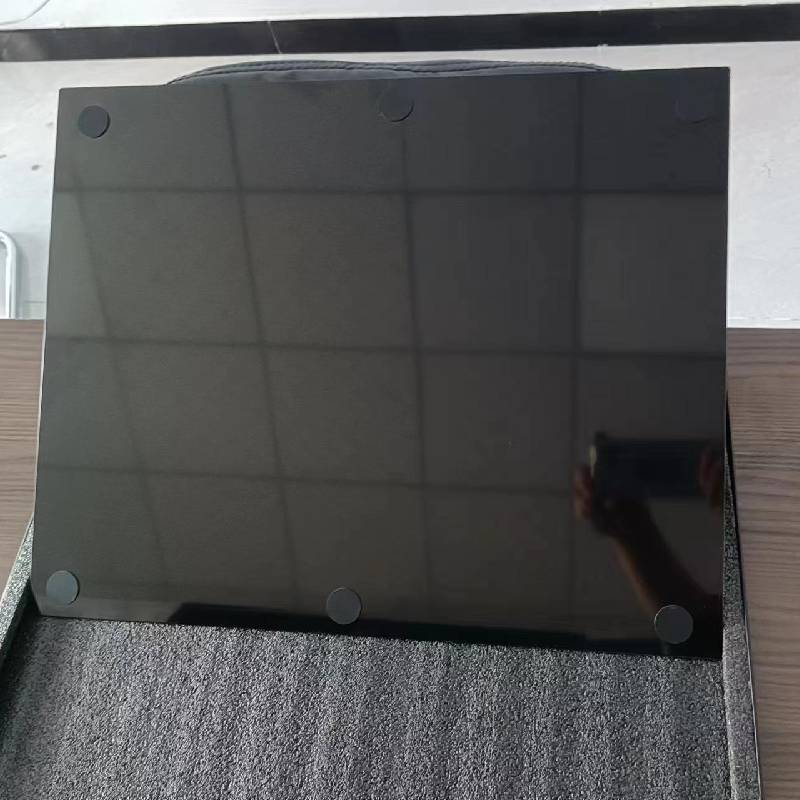Laminated toughened glass, also known as laminated safety glass or simply laminated glass, is a type of safety glass that holds multiple layers of glass bonded together with a layer of plastic in between. This unique structure provides superior strength and durability compared to traditional single-layer glass panes. In the event of breakage, the interlayer acts as a binding agent, preventing the glass from shattering into dangerous shards and instead holding the pieces in place.
When it comes to pricing laminated toughened glass, several factors come into play. The first factor is size larger panes will cost more due to increased material usage and potentially more complex installation requirements. Secondly, thickness matters; thicker glass is pricier but offers better security and sound insulation. Moreover, the quality and type of the interlayer can significantly affect the price, with some offering higher performance in terms of UV blocking, acoustic insulation, or even being able to withstand ballistic attacks.
The complexity of the project also plays a crucial role in determining the final cost. Custom shapes, edgework, holes, or special treatments such as tinting, coating, or pattern imprinting will increase the price. Additionally, the cost of labor for precise cutting, handling, and installation must be considered, especially for architectural applications where precision is paramount Additionally, the cost of labor for precise cutting, handling, and installation must be considered, especially for architectural applications where precision is paramount

Additionally, the cost of labor for precise cutting, handling, and installation must be considered, especially for architectural applications where precision is paramount Additionally, the cost of labor for precise cutting, handling, and installation must be considered, especially for architectural applications where precision is paramount
 laminated toughened glass price
laminated toughened glass price.
Market trends and availability can also influence pricing. If there is a high demand for laminated toughened glass in a particular region or season, prices may rise due to increased competition for materials and skilled labor. Similarly, if raw materials become scarce or face tariffs, this can drive up costs.
Finally, the reputation and service quality of the supplier or manufacturer should not be overlooked. Higher-priced suppliers might offer extended warranties, superior customer service, or additional benefits such as technical support or quick delivery times. It is important to balance the initial cost with the value provided over the lifetime of the product.
In conclusion, the price of laminated toughened glass is determined by a combination of physical attributes, project complexity, market conditions, and the value-added services provided by suppliers. Prospective buyers should carefully consider these factors when budgeting for their glass needs to ensure they are getting the best value for their investment.
 Afrikaans
Afrikaans  Albanian
Albanian  Amharic
Amharic  Arabic
Arabic  Armenian
Armenian  Azerbaijani
Azerbaijani  Basque
Basque  Belarusian
Belarusian  Bengali
Bengali  Bosnian
Bosnian  Bulgarian
Bulgarian  Catalan
Catalan  Cebuano
Cebuano  Corsican
Corsican  Croatian
Croatian  Czech
Czech  Danish
Danish  Dutch
Dutch  English
English  Esperanto
Esperanto  Estonian
Estonian  Finnish
Finnish  French
French  Frisian
Frisian  Galician
Galician  Georgian
Georgian  German
German  Greek
Greek  Gujarati
Gujarati  Haitian Creole
Haitian Creole  hausa
hausa  hawaiian
hawaiian  Hebrew
Hebrew  Hindi
Hindi  Miao
Miao  Hungarian
Hungarian  Icelandic
Icelandic  igbo
igbo  Indonesian
Indonesian  irish
irish  Italian
Italian  Japanese
Japanese  Javanese
Javanese  Kannada
Kannada  kazakh
kazakh  Khmer
Khmer  Rwandese
Rwandese  Korean
Korean  Kurdish
Kurdish  Kyrgyz
Kyrgyz  Lao
Lao  Latin
Latin  Latvian
Latvian  Lithuanian
Lithuanian  Luxembourgish
Luxembourgish  Macedonian
Macedonian  Malgashi
Malgashi  Malay
Malay  Malayalam
Malayalam  Maltese
Maltese  Maori
Maori  Marathi
Marathi  Mongolian
Mongolian  Myanmar
Myanmar  Nepali
Nepali  Norwegian
Norwegian  Norwegian
Norwegian  Occitan
Occitan  Pashto
Pashto  Persian
Persian  Polish
Polish  Portuguese
Portuguese  Punjabi
Punjabi  Romanian
Romanian  Russian
Russian  Samoan
Samoan  Scottish Gaelic
Scottish Gaelic  Serbian
Serbian  Sesotho
Sesotho  Shona
Shona  Sindhi
Sindhi  Sinhala
Sinhala  Slovak
Slovak  Slovenian
Slovenian  Somali
Somali  Spanish
Spanish  Sundanese
Sundanese  Swahili
Swahili  Swedish
Swedish  Tagalog
Tagalog  Tajik
Tajik  Tamil
Tamil  Tatar
Tatar  Telugu
Telugu  Thai
Thai  Turkish
Turkish  Turkmen
Turkmen  Ukrainian
Ukrainian  Urdu
Urdu  Uighur
Uighur  Uzbek
Uzbek  Vietnamese
Vietnamese  Welsh
Welsh  Bantu
Bantu  Yiddish
Yiddish  Yoruba
Yoruba  Zulu
Zulu 

 Additionally, the cost of labor for precise cutting, handling, and installation must be considered, especially for architectural applications where precision is paramount Additionally, the cost of labor for precise cutting, handling, and installation must be considered, especially for architectural applications where precision is paramount
Additionally, the cost of labor for precise cutting, handling, and installation must be considered, especially for architectural applications where precision is paramount Additionally, the cost of labor for precise cutting, handling, and installation must be considered, especially for architectural applications where precision is paramount